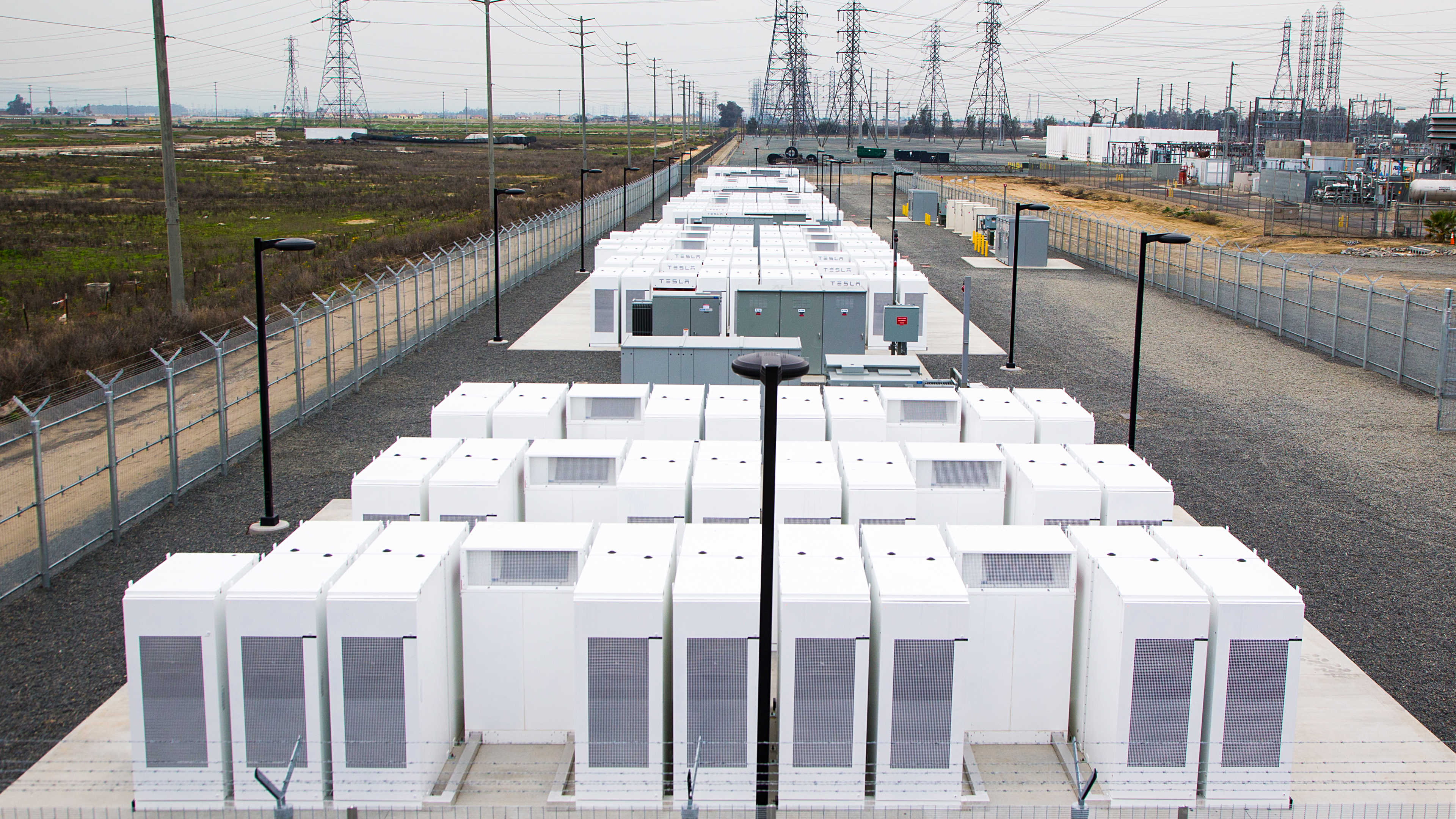
Tesla’s largest-ever Powerpack installation may be coming to north-central California. Pacific Gas and Electric Company (PG&E) applied to the California Public Utilities Commission (CPUC) for approval for a utility-owned 182.5 MW energy storage farm using Tesla Powerpacks at the company’s South Bay – Moss Landing Energy Storage site.
PG&E also sought approval for three third-party owned energy storage projects. One of the third-party projects will have a larger initial capacity than the Tesla project. The Tesla project, however, would have an expansion capacity of 1.1 GW.
The storage projects’ purpose is to help keep electrical power levels even for PG&E customers. The storage facilities would feed power to the grid when consumption exceeds normal levels and during blackouts or other service interruptions.
The three additional projects and their respective storage capacities are Dynegy Marketing and Trade, LLC, 300 MWh; Hummingbird Energy Storage LLC, 75 MW; and Micronoc Inc., 10 MW. All four projects would use lithium-ion battery storage technology and be located in the utility’s South Bay – Moss Landing area, which services from the South Bay area south to California’s central coast. The coverage area encompasses Silicon Valley.
The projects will have enough storage capacity to provide power to the region’s electrical grid for four hours. If the Tesla project expands to the max, its discharge duration will increase to six hours and provide six times as much energy as the initial installation.
Tesla’s 100 MW battery farm in South Australia, switched on December 1, 2018, has already proved its value. In the first four months of service, the costs for ancillary services to fill in for power interruptions in the region decreased by a full 90 percent, according to McKinsey and Co.
PG&E is looking for improved service and reduced costs from the proposed projects.
“Energy storage plays an increasingly important role in California’s clean energy future, and while it has been a part of PG&E’s power mix for decades – starting with the Helms Pumped Storage Plant in the 1980’s – recent decreases in battery prices are enabling energy storage to become a competitive alternative to traditional solutions. As a result, we believe that battery energy storage will be even more significant in enhancing overall grid reliability, integrating renewables, and helping customers save energy and money,” said Roy Kuga, vice president, Grid Integration and Innovation, PG&E.
